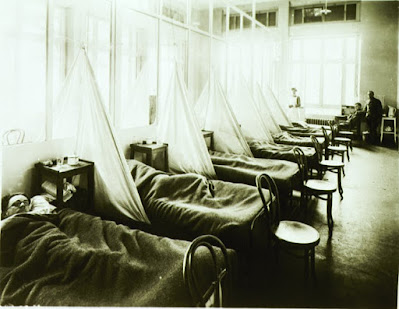Determining the unnoticeable, contagious infection
Up till well right into the 1930s, the "Spanish influenza" was mistakenly believed to be a microbial infection, with Haemophilus influenzae typically criticized. This germs is a pathogen in its very own best and might have added greatly to the 1918 pandemic's fatality toll – however it was an additional infection in a lot of the serious situations, not the initial reason for victims' diseases.
The response, it appears, lay at the very least partially in people's naiveté regarding the connection in between pets, the atmosphere and human illness. In 1918, vet J.S. Koen kept in mind an extremely comparable illness to influenza in pigs. Yet, it had not been up till 1931 that scientist Richard Shope determined a filterable representative, smaller sized compared to germs, as the reason for the illness in pigs and shown the transmission of an influenza infection. That function stimulated the summary of human influenza infection in 1933.
Strategi Memasang Taruhan Di Judi SloT Online
The devices of molecular biology, consisting of nucleic acid sequencing, established with the last fifty percent of the 20th century, lastly assisted open up the vault on the beginnings of the 1918 pandemic. In 2005, with a mix of sleuthing and sequencing of the viral genome, Jeffrey Taubenberger and a group of scientists pieced with each other the hereditary series of the fatal 1918 infection, utilizing infections gathered from the corpses of soldiers and various other bodies protected in the Frozen permafrost that passed away throughout the pandemic.
They had the ability to link the beginnings and development of the 1918 pandemic with infections that distribute in various other pets, especially those from birds and the pigs analyzed by Dr. Koen. Equally as seen in much a lot extra current outbreaks of brand-new influenza infections, the 1918 pandemic mapped its beginnings to infection stress distributing in nature.
The crucial understanding that resulted in the function reconstructing the 1918 infection had are available in the 1970s. Led by the decision of virologist Burglarize Webster, scientists recognized that influenza infections are widespread in the all-natural globe, especially in waterfowl. In birds and potentially various other pets, influenza infections have the ability to duplicate and transfer to brand-new holds without triggering any type of serious illness. On unusual events, provided the best situation, this brand-new hold is a various types. This cycle, typical in numerous pathogens, is an vital part of exactly just how infection is preserved in nature and discusses exactly just how pets could be a tank for unique influenza infections that could trigger human diseases.
Scientists had just determined viral bits for the very first time much less compared to thirty years previously the elevation of the influenza pandemic and the recently established area of virology was simply starting to determine them as reasons for illness in plants and pets. Researchers were just initially able to imagine an infection, the cigarette mosaic infection, after the 1931 innovation of the electron microscopic lense. However the innovation, understanding and speed of research study was various very early in the 20th century, why did the exploration of influenza infection take as long?



